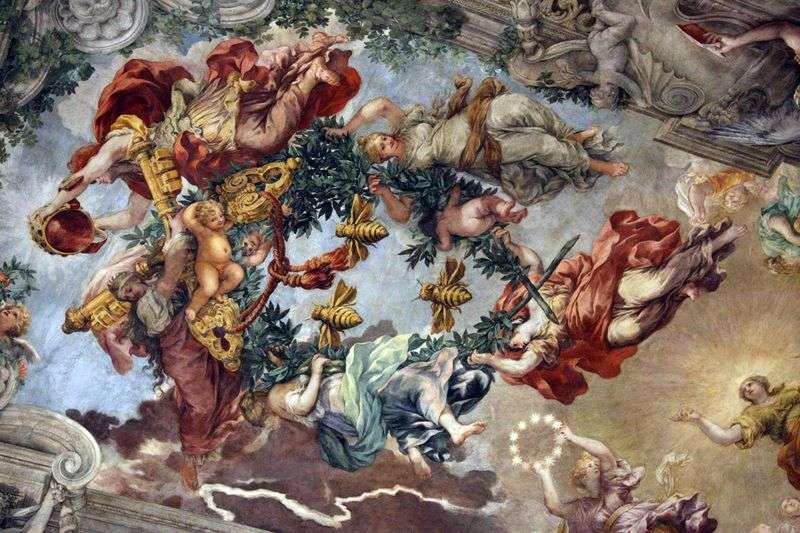
Pietro da Cortona was the leading master of Italian baroque. He studied in Cortona and Rome, he worked mainly in Rome and Florence. The monumental art of the master had a significant influence on European Baroque painting. Like the predecessors of the artist, the main element in the monumental paintings of Cortona was a plafond, but the master found new spatial and stylistic solutions for his execution.
Cortona’s compositions were characterized by rapid dynamics, he used the effects of illusionary perspective constructions, which, however, correlated with the overall architectural solution. Thus, a single integral composition was created, full of colorful splendor. The lofty classic look of the characters was combined with the powerful dynamics of full-life baroque scenes. All this made the works grandiose, attractive, emotional.
The best work of the master was painting “The Triumph of Divine Providence.” Other famous works: “Scenes from the life of Aeneas.” Plafond Palazzo Pamphili in Rome; “The abduction of Sabine women.” 1629. Capitoline Museums, Rome; “The meeting of Jacob and Laban”. 1640. The Pushkin Museum. A. S. Pushkin, Moscow; “The expulsion of Hagar.” 1640’s. The Pushkin Museum. A. S. Pushkin, Moscow.
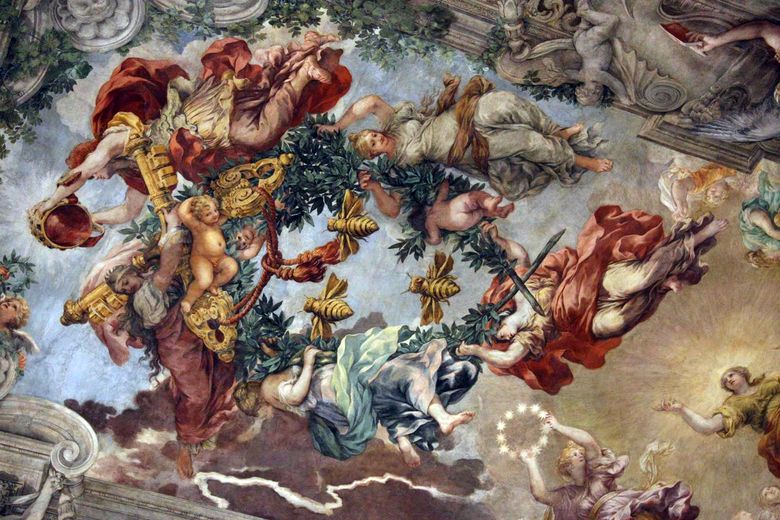 Le triomphe de la Divine Providence – Pietro da Cortona
Le triomphe de la Divine Providence – Pietro da Cortona Allegory of Divine Providence by Pietro da Corton
Allegory of Divine Providence by Pietro da Corton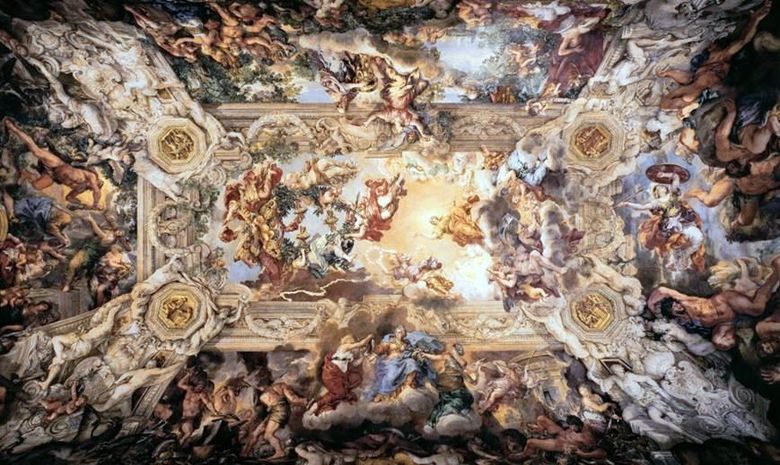 Allégorie de la Divine Providence – Pietre da Corton
Allégorie de la Divine Providence – Pietre da Corton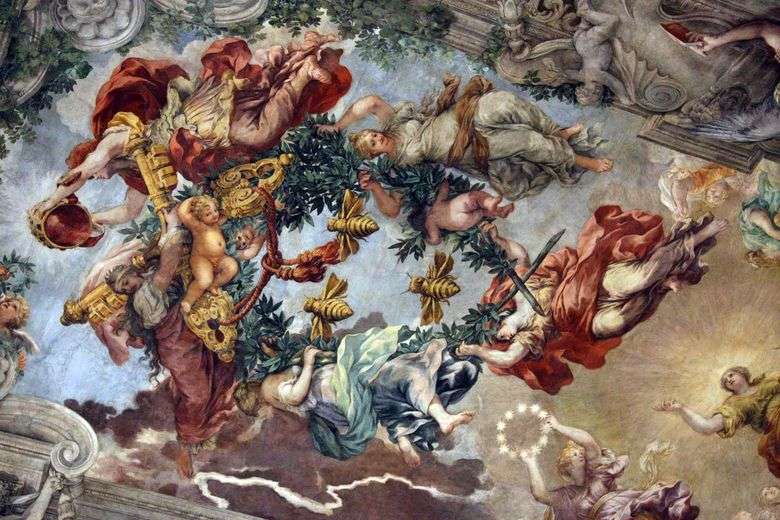 El triunfo de la Divina Providencia – Pietro da Cortona
El triunfo de la Divina Providencia – Pietro da Cortona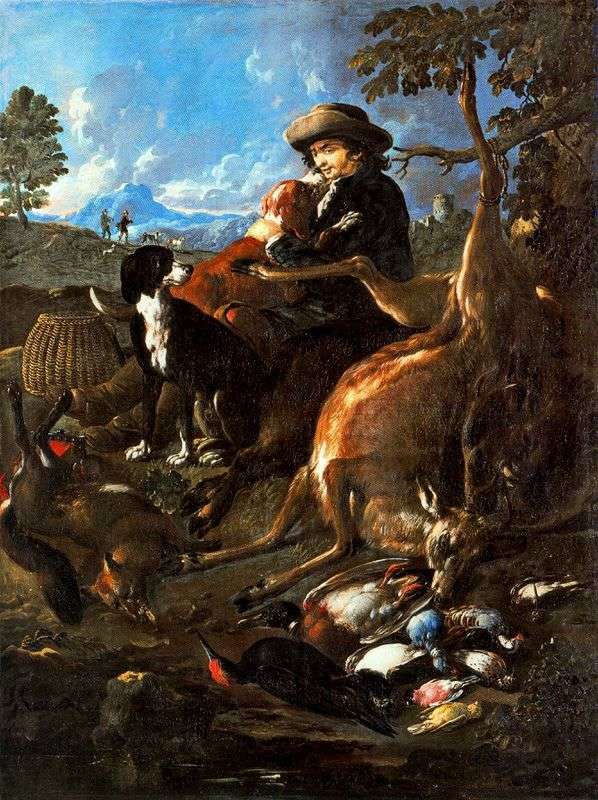 Hunter by Philip Peter Roos
Hunter by Philip Peter Roos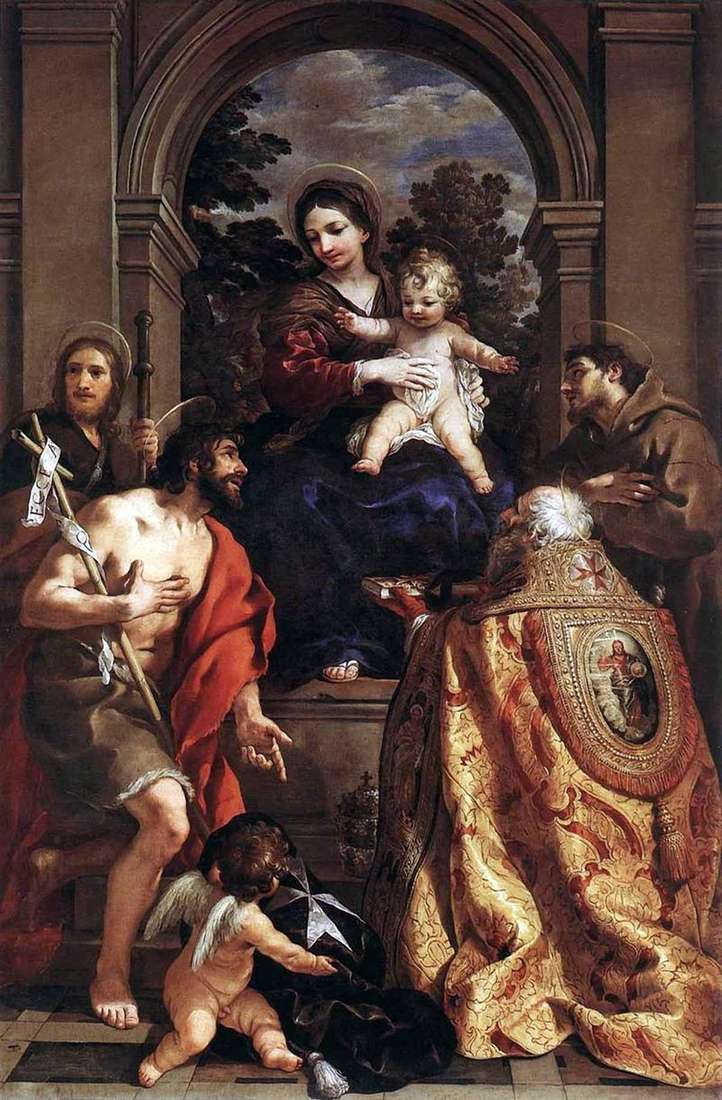 Madonna with saints by Pietro da Cortona
Madonna with saints by Pietro da Cortona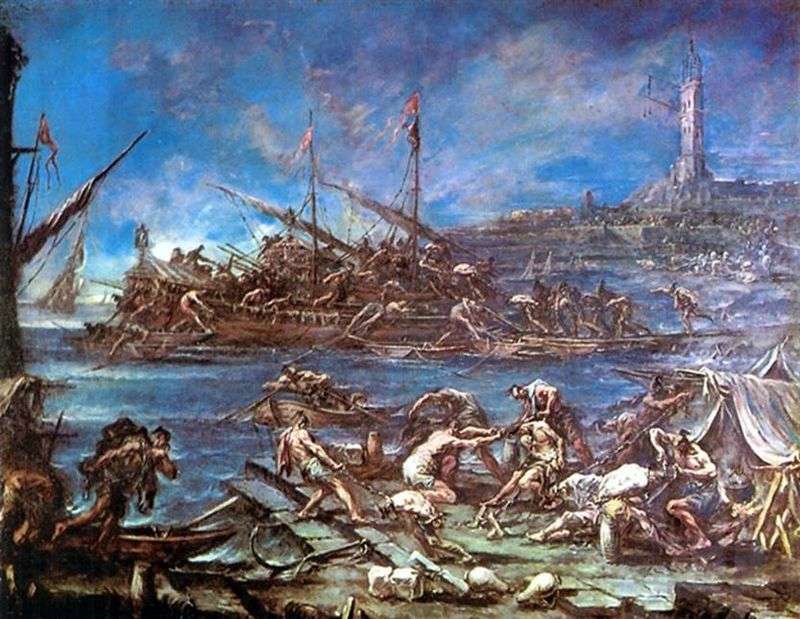 Landing on galleys by Alessandro Magnasco
Landing on galleys by Alessandro Magnasco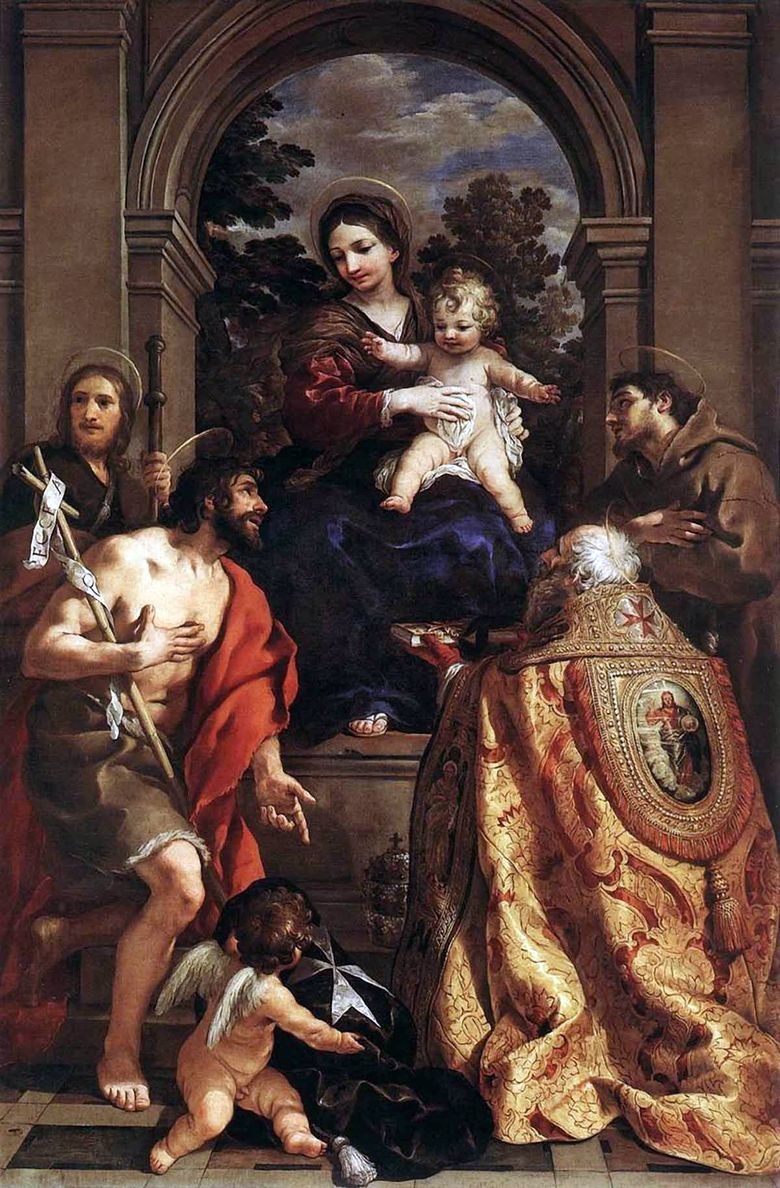 La Vierge et les saints – Pietro da Cortona
La Vierge et les saints – Pietro da Cortona